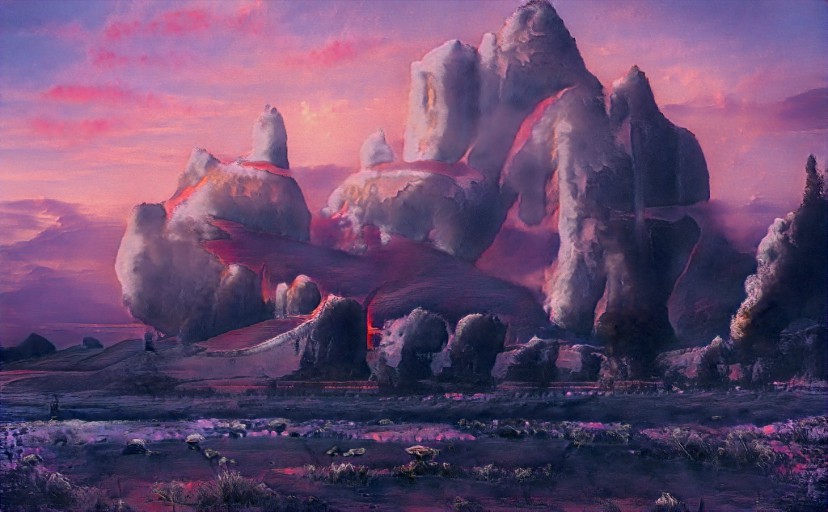Distal Tesseract
The Distal Tesseract is one of the ten tesseracts which make up the Manifold. Cubes falling within this tesseract are notable for their tendency to be dark in the visible spectrum of light, as the ambient light generated in the inflection layers is much more potent in both ultraviolet and infrared colors than ones normally visible to Humans. Certain kinds of atmospheric pollution (such as native spores) linger in these cubes for an unusually long period of time. This tesseract is considered to lie in the diametrically opposed region of the Manifold to the Medial Tesseract.
The environment of the Distal Tesseract is defined by its celestial phenomena. The spectrum of 'sunlight' and 'moonlight' in the Medial Tesseract falls mostly within visible wavelengths, centering on green, with relatively little in the way of deep infrared or ultraviolet. As one moves farther from the Medial Tesseract and towards the Distal Tesseract, the spectrum shifts, with infrared, deep red, indigo, violet, and ultraviolet spectra becoming more prevalent as yellows and green spectra fade. As a result of this, the Medial Tesseract appears brightly lit to the humanoid eye, while the Distal Tesseract appears dark. Residents of the Distal Tesseract tend to be dark in complexion - an evolved adaptation to protect the skin against the damaging effects of soft ultraviolet light.
Because of its burning and carcinogenic light, alien species, unseen hazards, and unexplored nature, the Distal Tesseract is widely considered to be the most dangerous environment in the Manifold. Even so, it is a source of great potential wealth and adventure for those willing to brave it.
Geography
The cubes of the Distal Tesseract are connected to adjacent tesseracts through the following inflection layer transits:
- Distal A to Eastern C
- Distal B to Caudal D
- Distal C to Western A
- Distal D to Rostral B
- Distal E to Ventral G
- Distal F to Northern H
- Distal G to Dorsal E
- Distal H to Southern F
Fauna & Flora
The unique environment of the Distal Tesseract does not lend it to easy habitation by terrestrial plant and animal life, though a few species do manage to eke out a hardscrabble existence there (especially nocturnal creatures). Fungi are the most common form of terrestrial life to call the Distal Tesseract home. The preponderance of soft ultraviolet light has increased rates of mutation and speciation within the Distal Tesseract, prompting both interest and concern in would-be explorers.
One unusual aspect of life in the Distal Tesseract is that much of it comes from an alternate evolutionary line where D-amino acids are used in place of L-amino acids (and vice versa) in living systems. As a result of this alternate biochemistry, creatures that evolved in the Distal Tesseract generally has a difficult time interacting with life evolved elsewhere (i.e. a Distal carnivore wouldn't get much nutrition from digesting a Medial prey animal) and vice versa. Over time, creatures from each evolutionary line with a high enough degree of neurological development have learned not to bother creatures from the opposite line, as this would result in expending energy for meals that provide none, though less intelligent creatures (i.e. Distal polyps) are often unable to make the distinction. The Verdial symbiotic lichen is a rare case of a Distal species which has developed the ability to interact with a Medial species in a mutually beneficial manner.
Natural Resources
Being only sparsely explored, the Distal Tesseract remains one of the few tesseracts to be largely unspoiled by human development. Useful species, rare minerals, and well-concealed building sites are ripe for the taking - if, that is, the explorer is willing to take on the environmental hazards.
Type
Dimensional plane
Vehicles Present
Location under
Included Locations
Related Ethnicities
Contested By
Characters in Location
Inhabiting Species
Related Myths




Comments